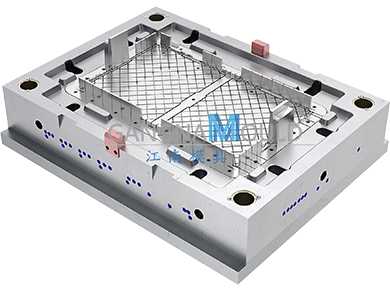The development status and trend of plastic molds
1. Development Status
◆ The market scale continues to expand
China's plastic mold exports increased from US$2.968 billion in 2017 to US$5.351 billion in 2023, and imports decreased from US$847 million to US$531 million during the same period, indicating that domestic technological competitiveness has significantly improved and its international market share has expanded.
◆ Technology upgrades promote efficiency improvement
Gas-assisted molding technology is maturely applied and used in the production of complex structural parts such as washing machine shells and automotive decorative parts, effectively reducing material consumption and improving the yield rate.
The penetration rate of hot runner technology is 33.33%. Through the design optimization of manifold and external heating, the pouring system is reduced to reduce cold material waste.
The deep integration of CAD/CAE/CAM technology realizes the digital collaboration of mold design, simulation and manufacturing, shortening the R&D cycle by more than 30%.
◆ Coordinated development of the industrial chain
The upstream raw materials are mainly mold steel, and the proportion of high-performance materials such as pre-hardened steel and medium carbon steel has increased; the midstream manufacturing link has accelerated the intelligent transformation, and large enterprises have introduced precision equipment such as high-speed milling and EDM.
The downstream demand is diversified, and the lightweight of automobiles and the precision of electronic products have promoted the development of molds towards high precision and complex structures.
2. Future trends
◆ Technology has developed in depth towards high precision and intelligence
The popularity of high-speed cutting technology has increased, and the processing accuracy has reached ±0.05mm, supporting the efficient production of large-scale cover molds.
Digital scanning systems (such as laser probes and contact probes) shorten the reverse development cycle of molds, and the dynamic accuracy reaches 0.02mm.
3D printing and AI technologies are gradually applied to mold prototype manufacturing and process optimization, promoting personalized customization needs.
◆ Product structure has evolved towards large-scale and multi-functional
One mold and multi-cavity design has become the mainstream, and the mold tonnage has exceeded 100 tons. The supporting equipment needs to meet the requirements of large stroke and high rigidity.
The growing demand for composite molds (integrating multiple molding processes) has promoted the upgrading of programming technology and processing equipment.
◆ Innovation in materials and surface treatment technology
New mold steels (such as pre-hardened steel MOVTREX-A and corrosion-resistant steel 4Cr13) increase mold life by 20%-30%.
Multi-element co-diffusion and coating technology (TiN, CrN, etc.) enhance surface wear resistance and corrosion resistance, replacing the traditional single nitriding process.
◆ Green manufacturing and energy saving and consumption reduction
The hot runner system and gas-assisted molding technology are further optimized to reduce the waste of plastic raw materials by more than 30%.
The application ratio of environmentally friendly mold steel and recyclable materials has increased, responding to the global carbon neutrality goal.
◆ Globalization and deepening of regional cooperation
Domestic companies expand their markets through technology exports and overseas factories, and Southeast Asia and Europe have become key layout areas.
Summary
Driven by both technological iteration and market demand, the plastic mold industry is accelerating its transformation towards high precision, intelligence and greenness. Leading companies consolidate their advantages through technological barriers and global layout, while small and medium-sized enterprises need to focus on innovation in niche areas to cope with competition.



 English
English русский
русский Español
Español Français
Français عربى
عربى 简体中文
简体中文




